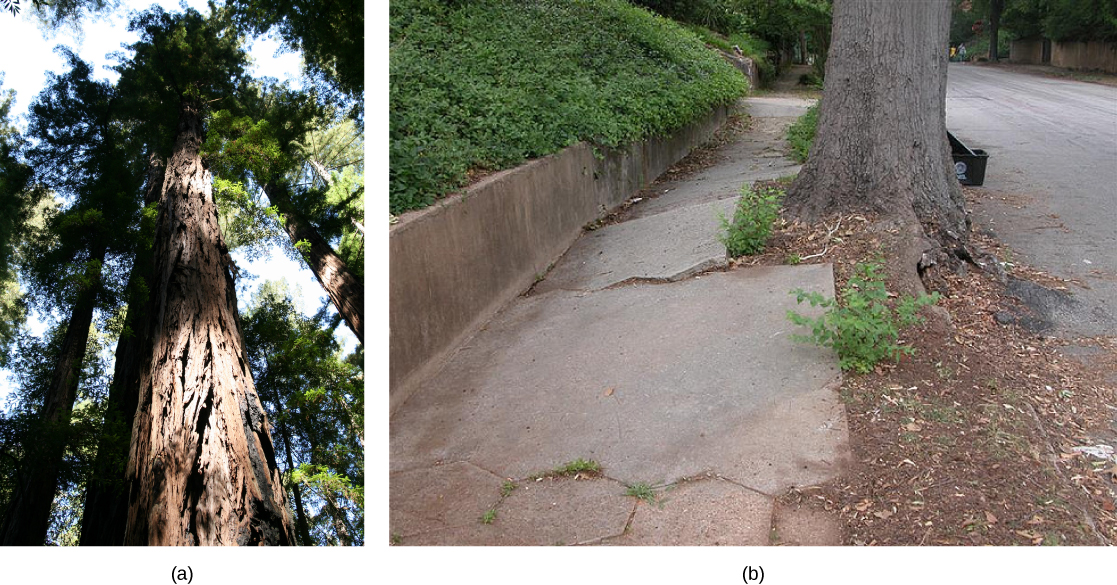| << Chapter < Page | Chapter >> Page > |
The structure of plant roots, stems, and leaves facilitates the transport of water, nutrients, and photosynthates throughout the plant. The phloem and xylem are the main tissues responsible for this movement. Water potential, evapotranspiration, and stomatal regulation influence how water and nutrients are transported in plants. To understand how these processes work, we must first understand the energetics of water potential.
Plants are phenomenal hydraulic engineers. Using only the basic laws of physics and the simple manipulation of potential energy, plants can move water to the top of a 116-meter-tall tree ( [link] a ). Plants can also use hydraulics to generate enough force to split rocks and buckle sidewalks ( [link] b ). Plants achieve this because of water potential.

Water potential is a measure of the potential energy in water. Plant physiologists are not interested in the energy in any one particular aqueous system, but are very interested in water movement between two systems. In practical terms, therefore, water potential is the difference in potential energy between a given water sample and pure water (at atmospheric pressure and ambient temperature). Water potential is denoted by the Greek letter ψ ( psi ) and is expressed in units of pressure (pressure is a form of energy) called megapascals (MPa). The potential of pure water (Ψ w pure H2O ) is, by convenience of definition, designated a value of zero (even though pure water contains plenty of potential energy, that energy is ignored). Water potential values for the water in a plant root, stem, or leaf are therefore expressed relative to Ψ w pure H2O .
The water potential in plant solutions is influenced by solute concentration, pressure, gravity, and factors called matrix effects. Water potential can be broken down into its individual components using the following equation:
where Ψ s , Ψ p , Ψ g , and Ψ m refer to the solute, pressure, gravity, and matric potentials, respectively. “System” can refer to the water potential of the soil water (Ψ soil ), root water (Ψ root ), stem water (Ψ stem ), leaf water (Ψ leaf ) or the water in the atmosphere (Ψ atmosphere ): whichever aqueous system is under consideration. As the individual components change, they raise or lower the total water potential of a system. When this happens, water moves to equilibrate, moving from the system or compartment with a higher water potential to the system or compartment with a lower water potential. This brings the difference in water potential between the two systems (ΔΨ) back to zero (ΔΨ = 0). Therefore, for water to move through the plant from the soil to the air (a process called transpiration), Ψ soil must be>Ψ root >Ψ stem >Ψ leaf >Ψ atmosphere .

Notification Switch
Would you like to follow the 'Biology 1308 bonus credit chapters--from openstax "biology"' conversation and receive update notifications?